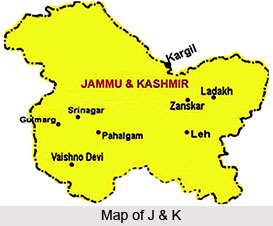 Among the Dardic languages Kashmiri is the most prominent language, with an established literary tradition and official recognition as one of the national languages of India.
Among the Dardic languages Kashmiri is the most prominent language, with an established literary tradition and official recognition as one of the national languages of India.
The Dardic group has been defined as a sub-group of the Indo-Aryan languages. They experienced strong influences from the Nuristani and East Iranian languages. The Dardic languages do share some common features that are different from Indo-Aryan, such as the Dardic metathesis.
All the Dardic languages are small minority languages. In some cases they are spoken in areas difficult to access due to mountainous terrain. All of the languages have been influenced by more prominent neighboring languages. Dardic languages in turn also have left a discernible mark on non-Dardic Indo-Aryan languages, such as Punjabi language. It is believed that some Pahari languages of Uttarakhand also have been influenced by Dardic languages.
Features of Dardic languages
Dardic languages have experienced a partial or complete loss of aspirated consonants. Khowar uses the word buum for earth, Pashai uses the word duum for smoke and Kashmiri uses the word dod for milk.
Dardic metathesis and epenthesis
Both ancient and modern Dardic languages have a marked tendency towards metathesis where a "pre- or postconsonantal `r` is shifted forward to a preceding syllable". This was seen in the Gandhara region on rock edicts of Ashoka. For instance there is a tendency to misspell the Sanskrit words priyadarshi as priyadrashi and dharma as dhrama. Modern-day Kalasha uses the word driga.
There is also a tendency for consonantal epenthesis, where consonants are inserted or altered in a word. Kashmiri has a tendency to switch k to ch and j to z.
Verb position in Dardic
Several Dardic languages present have "verb second" as the normal grammatical form. This is similar to many Germanic languages like the English
Dardic languages have been organized into the following subfamilies:
Pashai languages.
Kunar languages include Gawar-Bati, Dameli, Shumashti and Nangalami.
Chitral languages include Khowar and Kalasha.
Kohistani languages include Kalami, Torwali, Kalkoti, Indus Kohistani, Bateri, Chilisso, Gowro, Wotapuri-Katarqalai and Tirahi.
Shina languages includes Shina, Brokskad, Ushojo, Domaaki, Palula and Savi
Kashmiri languages include Kashmiri, Poguli, Rambani, and Kishtwari.



















